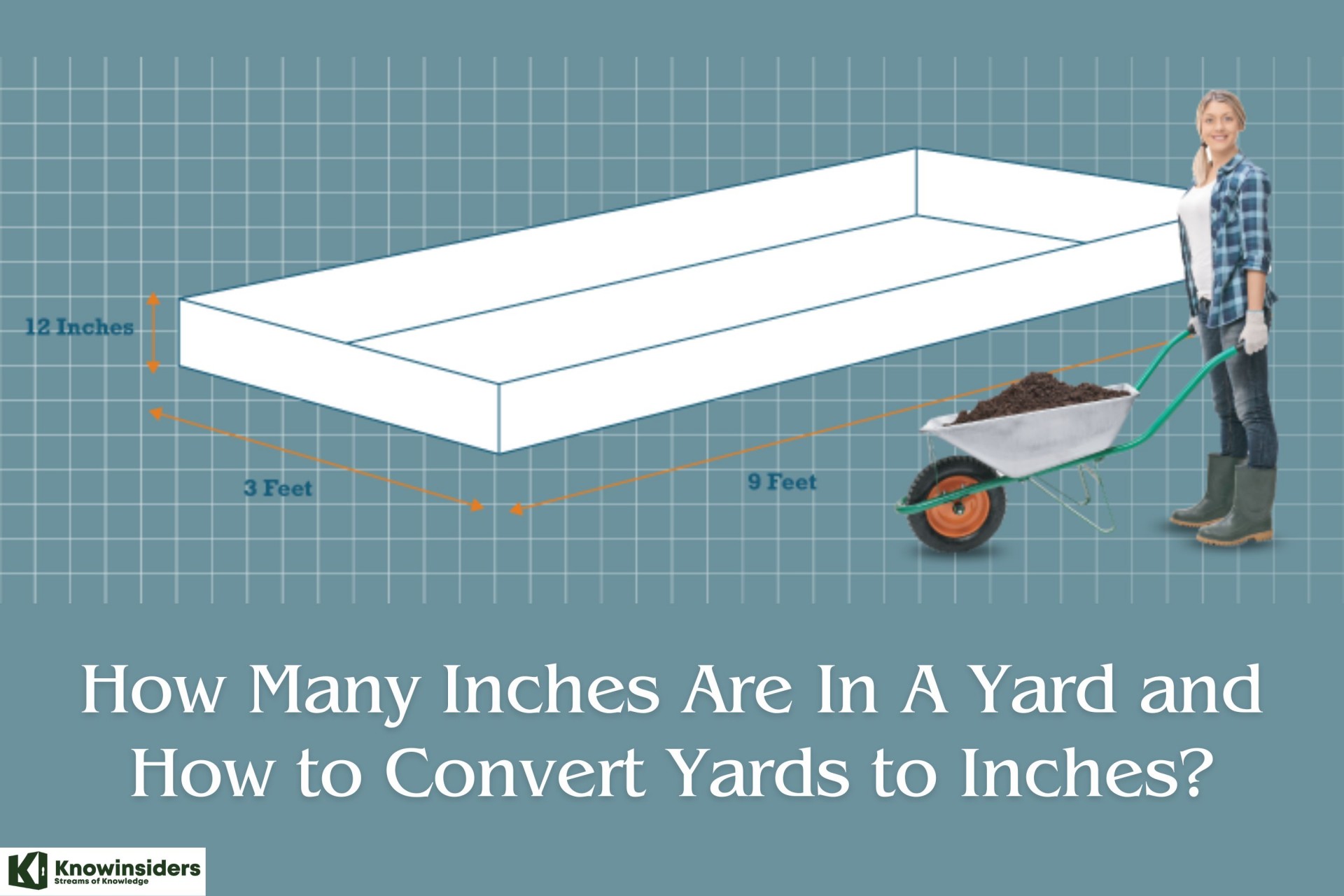How to Calculate and Convert Grams to Milligrams: Check the Simplest Ways
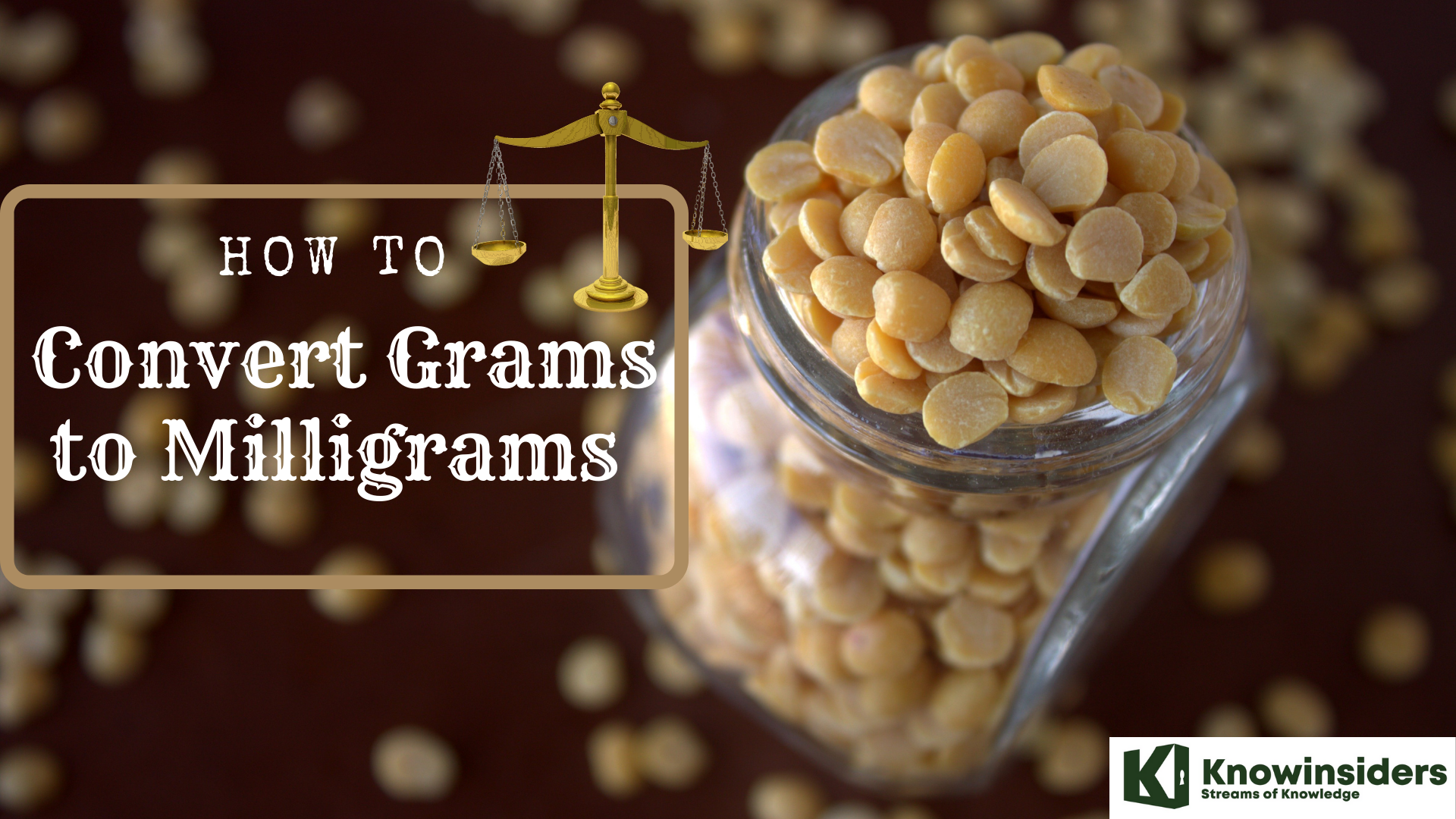 |
| How to convert grams to milligrams |
Converting grams to milligrams is something you might be asked to do during a math exam. These types of conversions are also common in many science courses. Knowing how to make this conversion is also useful if you plan to create new recipes in the kitchen and you own a scale that only measures in milligrams. You also may have to convert grams to milligrams if you are in a country that uses the metric system. This is the best ways to convert grams to milligrams.
What is Gram?
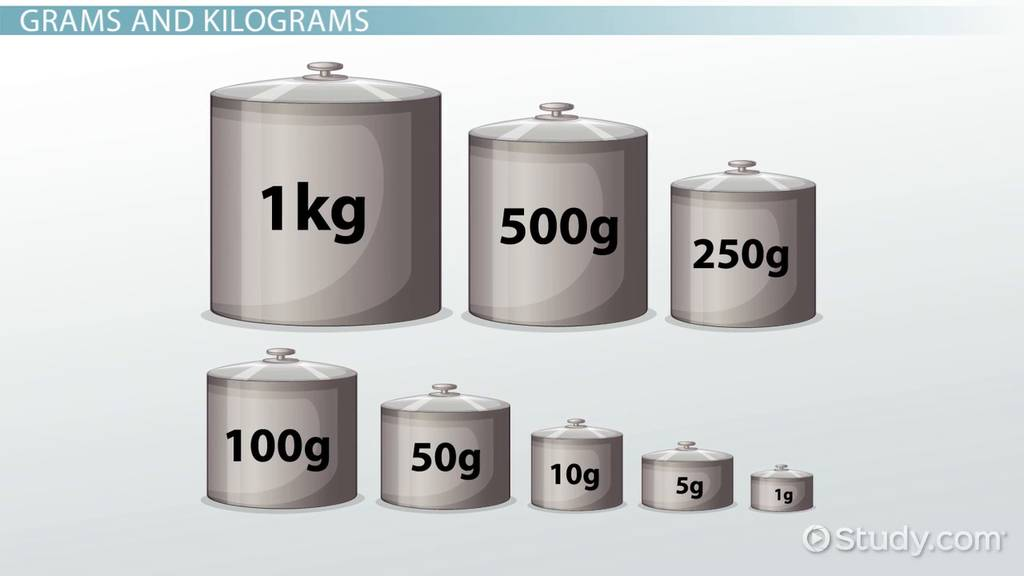 |
| Photo: Study |
A gram is a unit of mass in the metric system defined as one thousandth (1 x 10-3) of a kilogram. Originally, the gram was defined as a unit equal to the mass of one cubic centimeter of pure water at 4°C (the temperature at which water has maximum density). The definition was changed when the base units for the International System of Units (SI) were redefined by the 26th General Conference of Weights and Measures. The change went into effect May 20, 2019.
The symbol for the gram is the lowercase letter "g." Incorrect symbols include "gr" (the symbol for grains), "Gm" (the symbol for the gigameter), and "gm" (easily confused with the symbol for the gram-meter, g⋅m).
Gram may also be spelled gramme.
Examples of Gram Weight
Because a gram is a small unit of weight, its size may be difficult for many people to visualize. Here are common examples of objects that have about one gram of mass:
- A small paperclip
- A thumbtack
- A piece of chewing gum
- One US bill
- A pen cap
- One cubic centimeter (milliliter) of water
- A quarter teaspoon of sugar
Useful Gram Conversion Factors
Grams may be converted into several other units of measurement. Some common conversion factors include:
- 1 gram (1 g) = 5 carats (5 ct)
- 1 gram (1 g) = 10-3 kilograms (10-3 kg)
- 1 gram (1 g) = 15.43236 grains (gr)
- 1 troy ounce (ozt) = 31.1035 g
- 1 gram = 8.98755179×1013 joules (J)
- 500 grams = 1 Jin (Chinese unit of measurement)
- 1 avoirdupois ounce (oz) = 28.3495 grams (g)
Uses of the Gram
The gram is widely used in science, particular chemistry and physics. Outside of the United States, the gram is used to measure non-liquid cooking ingredients and produce (e.g., flour, sugar, bananas). Relative composition for food nutrition labels is stated per 100 grams of product, even within the United States.
History of the Gram
In 1795, the French National Convention replaced the gravet with the gramme in the metric system. While the term changed, the definition remained that of the weight of one cubic centimeter of water. The word gramme came from the Latin word gramma which in turn derived from the Greek word grámma. The grámma was a unit used in Late Antiquity (around the 4th century AD) equal to two oboli (Greek coins) or one twenty-fourth part of an ounce.
The gram was a fundamental unit of mass in the centimeter-gram-second (CGS) system in the 19th century. The meter-kilogram-second (MKS) system of units was proposed in 1901, but the CGS and MKS systems co-exists throughout the early to mid 20th century. The MKS system became the system of base units in 1960. However, the gram was still defined based on the mass of water. In 2019, the gram was defined based on the kilogram. The kilogram has a mass almost exactly equal to that of one liter of water, but its definition has been refined, too. In 2018, Planck's constant was defined. This allowed definition of the kilogram in terms of the second and the meter. Planck's constant h is defined to be 6.62607015×10−34 and equal to one kilogram meter squared per second (kg⋅m2⋅s−1). Even so, standard masses for the kilogram still exist and are used as secondary standards for kilogram and gram weights. For all practical purposes, a liter of pure water has a mass of one kilogram and a milliliter of pure water has the mass of one gram.
What Are Milligrams?
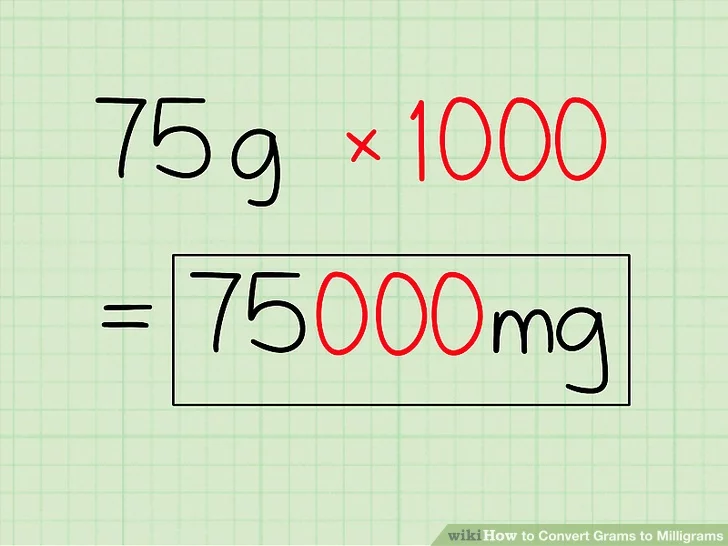 |
| Photo: Wikihow |
Milligrams are very small measurements of solid weight in the international metric system. Specifically, a milligram is one-thousandth of a gram; to put it in concrete terms, the common mosquito weighs around 2 milligrams. In imperial (US) measurements, there are more than 28,000 milligrams in a single ounce. Metric units of measurement are widely used for scientific and medical purposes, even in the United States, which has not adopted the metric system for everyday use. Milligrams are commonly used to calculate dosages for medications, as even a small change in the amount of a drug can alter its effectiveness.
The metric system originated in 18th-century Europe, at a time when standards of measurement varied by nation and sometimes by region. Increasing international commerce and advances in science made a standard system of measurement essential. In the aftermath of the French Revolution of 1792, France’s new government proposed and accepted the earliest form of the metric system. In their eagerness to supplant old traditions, the French revolutionaries also proposed other new standards, such as a completely new calendar, but these were not as successful. Ironically, U.S. patriot and scientist Thomas Jefferson had proposed a similar system of measurements, but it was rejected by the U.S. Congress.
The metric system operates on basic units such as the gram, the meter, and the liter. Greater or lesser quantities are calculated by a factor of ten; a centimeter, for example, is one-tenth of a decimeter, which in turn is one-tenth of a meter. The metric system eventually evolved into the current system, called the International System of Units (SI), in official use by most nations around the world. A famous exception is the United States, which still uses the old British system, now known as the imperial or US system. Even in the United States, metric measurements are commonly used, appearing, for example, alongside imperial measurements on food packaging.
The gram is such a tiny amount of weight that the SI has adopted the kilogram as a more useful standard unit. A kilogram equals roughly 2.2 pounds in the imperial system. The milligram, being one-millionth of that weight, is clearly too small to be useful in casual day-to-day life. In scientific fields, however, such as chemistry, physics, and medicine, the milligram is a common unit of measurement. Only solid objects are weighed in grams or milligrams; liquid volume is calculated using the liter and the milliliter.
The most frequent use of milligrams in everyday life is to determine medication dosages. Both prescription and over-the counter medications are measured in milligrams, usually listed by the standard abbreviation "mg.” The effect of these chemicals on the body is so profound that determining very small amounts is crucial to managing the effectiveness of pharmaceutical products. With some very powerful medications, for example, the difference between an effective dose and an overdose can be a matter of milligrams.
How to Convert Grams to Milligrams
Determine the number of grams you want to convert. For example, you might need to know how many milligrams are in a bag of sugar that weighs 50 grams.
Multiply the number of grams times 1,000. You use the number 1,000 because 1,000 milligrams make up 1 gram.
Find the product of your multiplication. 50 times 1,000 equals 50,000. Therefore, 50 grams is equal to 50,000 milligrams.
To convert a gram measurement to a milligram measurement, multiply the weight by the conversion ratio.
Since one gram is equal to 1,000 milligrams, you can use this simple formula to convert:
milligrams = grams × 1,000
The weight in milligrams is equal to the grams multiplied by 1,000.
For example, here's how to convert 5 grams to milligrams using the formula above.
5 g = (5 × 1,000) = 5,000 mg
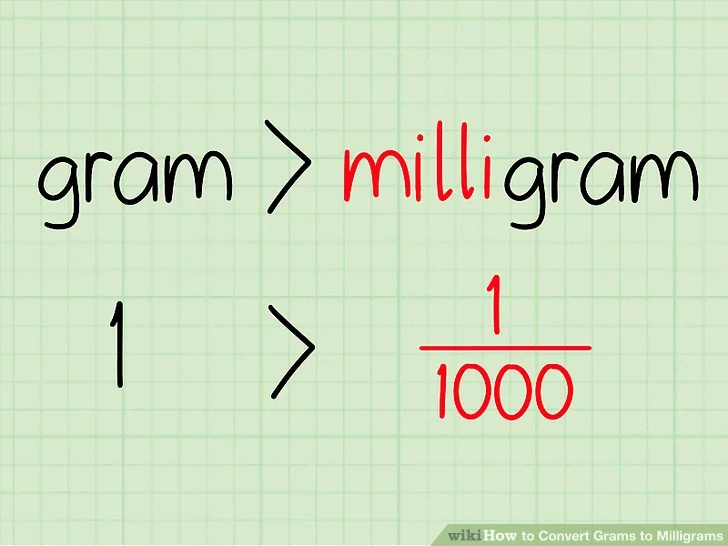 |
| Photo: Wikihow |
Step 1. Note that milligrams (mg) are smaller than grams (g). Since “milli” means “one-thousandth,” a milligram is one-thousandth the size of a gram. Therefore, there will be fewer grams than milligrams.
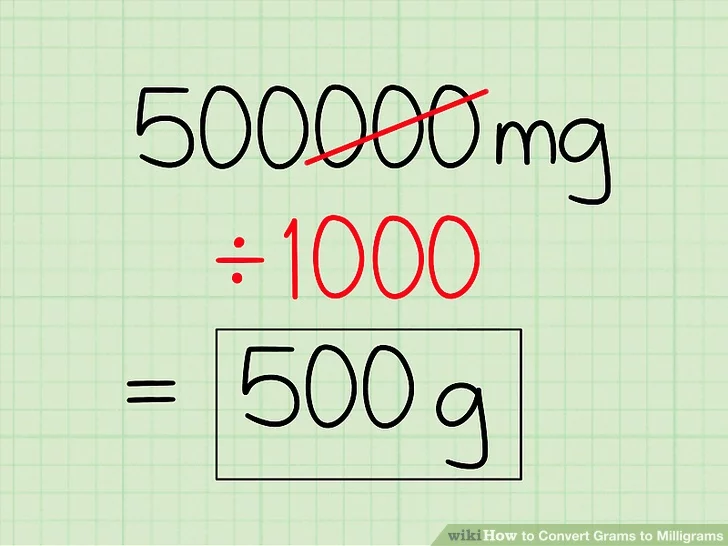 |
| Photo: Wikihow |
Step 2. Divide the number of milligrams (mg) by 1,000 to find the number of grams (g). Keep in mind that there are 1,000 milligrams in every gram.
For instance, if you have 500,000 milligrams, divide 500,000 by 1,000, which equals 500. Therefore, 500,000 milligrams (mg) is equal to 500 grams (g).
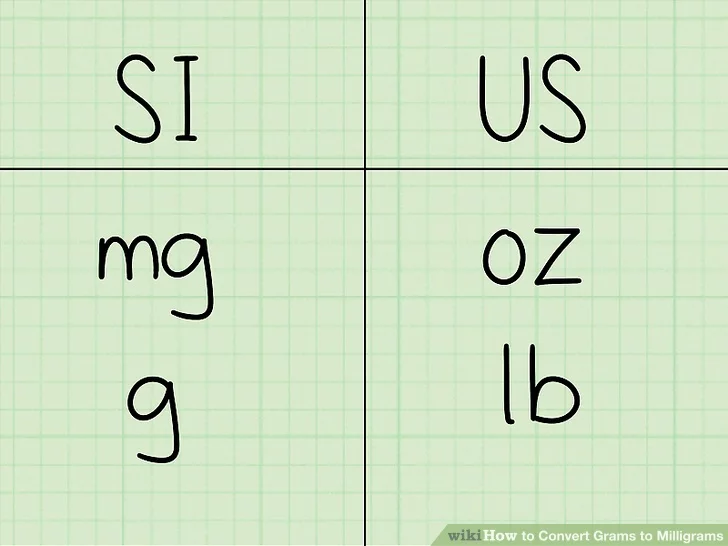 |
| Photo: Wikihow |
Step 3. Remember that milligrams (mg) and grams (g) are metric units. If you live in the United States or another country that uses the imperial measurement system, you may be unfamiliar with grams and milligrams, since they are metric units. In the U.S., ounces (oz) and pounds (lbs) are usually used to measure weight.
How many milligrams in a gram?
1 Gram (g) is equal to 1000 milligrams (mg). To convert grams to milligrams, multiply the gram value by 1000.
For example, to find out how many milligrams there are in 2 grams, multiply 2 by 1000, that makes 2000 mg in 2 grams.
grams to milligrams formula
milligram = gram * 1000
Gram to Milligram Conversion Table
| Grams | Milligrams |
|---|---|
| 0.001 g | 1 mg |
| 0.002 g | 2 mg |
| 0.003 g | 3 mg |
| 0.004 g | 4 mg |
| 0.005 g | 5 mg |
| 0.006 g | 6 mg |
| 0.007 g | 7 mg |
| 0.008 g | 8 mg |
| 0.009 g | 9 mg |
| 0.01 g | 10 mg |
| 0.02 g | 20 mg |
| 0.03 g | 30 mg |
| 0.04 g | 40 mg |
| 0.05 g | 50 mg |
| 0.06 g | 60 mg |
| 0.07 g | 70 mg |
| 0.08 g | 80 mg |
| 0.09 g | 90 mg |
| 0.1 g | 100 mg |
| 0.2 g | 200 mg |
| 0.3 g | 300 mg |
| 0.4 g | 400 mg |
| 0.5 g | 500 mg |
| 0.6 g | 600 mg |
| 0.7 g | 700 mg |
| 0.8 g | 800 mg |
| 0.9 g | 900 mg |
| 1 g | 1,000 mg |
Convert Grams to Milligrams using Calculator Online
Our milligrams to grams converter makes it easier to turn any quantity of milligram (mg) into its exact equivalent quantity of grams. You better know that both units of weight/mass are commonly used in our everyday languages.
How many grams are in a milligram?
- 2 milligrams (mg) is equal to 0.002 grams (g)
- 2 grams (g) is equal to 2000 milligrams (mg)
Milligrams to grams Formula:
The formula for mg to g is:
g = mg ÷ 1,000
How do you convert milligram to gram (mg to g)?
Convert with:
- Online grams to milligrams to grams converter
- Formula (look at the example below)
Example of conversions from mg to grams:
Problem: Convert 500 mg to g?
Solution:
Step 1 (Formula):
- g = mg ÷ 1,000
Step 2 (Put the Values):
- g = 500 ÷ 1,000
Step 3 (Result):
- 0.5 grams (g)
Means, 500 milligrams (mg) is equal to 0.5 grams (g)
 |
| Photo: Screenshot |
 How to Convert DVD to MP4: Best Methods How to Convert DVD to MP4: Best Methods Since the development of modern technology, DVDs have been a lesser choices in watching movies. Here is a detailed guide on how to convert DVD ... |
 How to Convert PDF to GIF: Best Methods How to Convert PDF to GIF: Best Methods To learn how to convert PDF to GIF in the simpliest and best ways in the article below. |
 How to Convert MOV to MP4: Simplies Ways How to Convert MOV to MP4: Simplies Ways Let's check out this guide on how to convert MOV video format to MP4 in the article below. |
 How to Convert PDF to Image Files: Best Methods and Simpliest Ways How to Convert PDF to Image Files: Best Methods and Simpliest Ways PDF and image files are two familiar format, but how do we convert from one to another? This guide will help you with it, along ... |

